Northern Vietnam is so different from Southern Vietnam that it could well be considered its own country. The majority of Vietnam’s 54 ethnic minority groups live in Northern Vietnam, spread throughout the mountains that ripple out from the capital city. Indeed, Hanoi city is an urban exception to the regional rule. Most of the cities in Northern Vietnam feel more like bubbles of human civilization carved out of the wilderness, wrapped by rugged jungle, ancient limestone karst mountains, and cascading rice paddy terraces that transform with the seasons from glistening mirrors of water to infinite shades of brilliant green and finally to the wholesome gold of harvest.
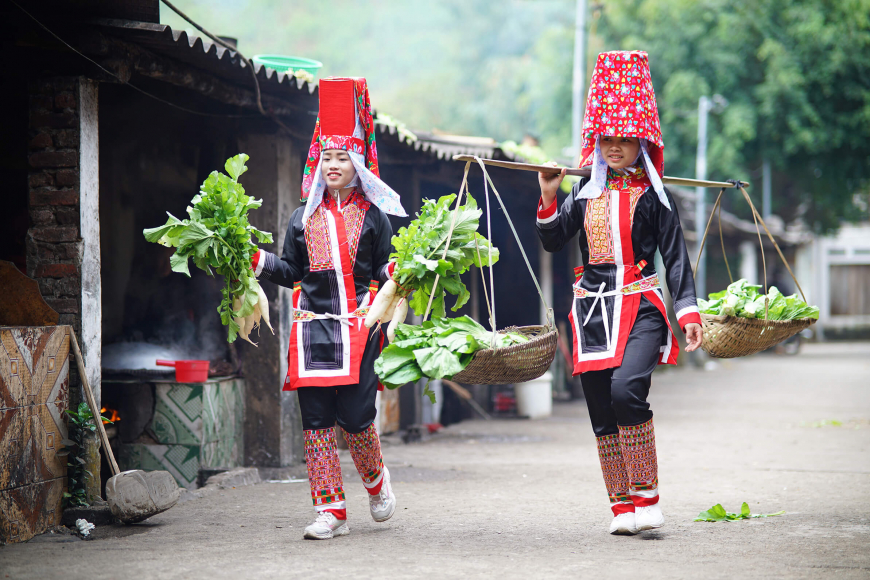
Culture and History in Hanoi City
Hanoi is the best entry point into Northern Vietnam. Having served as the cultural and historical capital of the country for a thousand years, the bustling city is a contemporary metropolis of ancient secrets tucked down twisting alleyways.
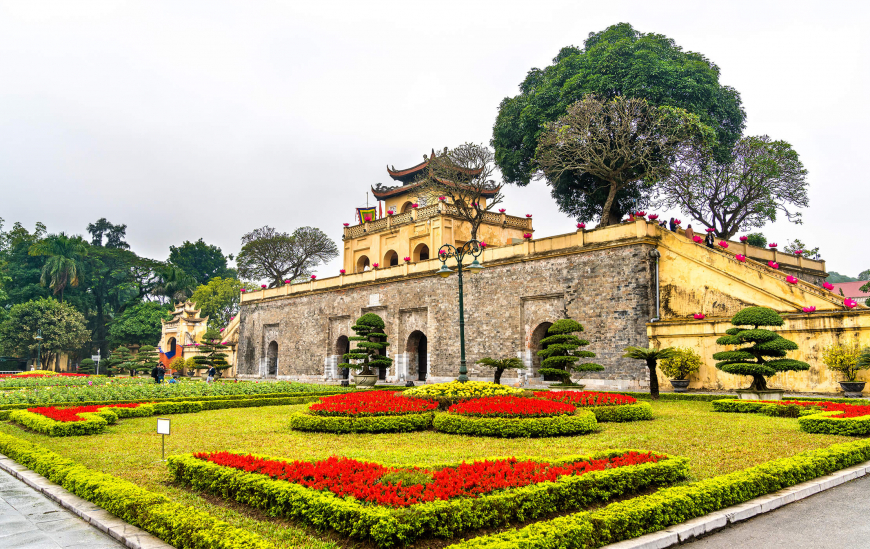
The Old Quarter is the focal point for most travelers. The walkable district has served as the center for trade for two thousand years, and most streets are still named for what the original craftsmen and artisans sold there. Salt, silk, silver; brass, bamboo, and herbal medicine can all be found on their namesake market streets. The “36 Streets” of the Old Quarter extend out from Hoan Kiem Lake, where teenagers congregate and elders exercise on the wide walking street from sunrise onwards.
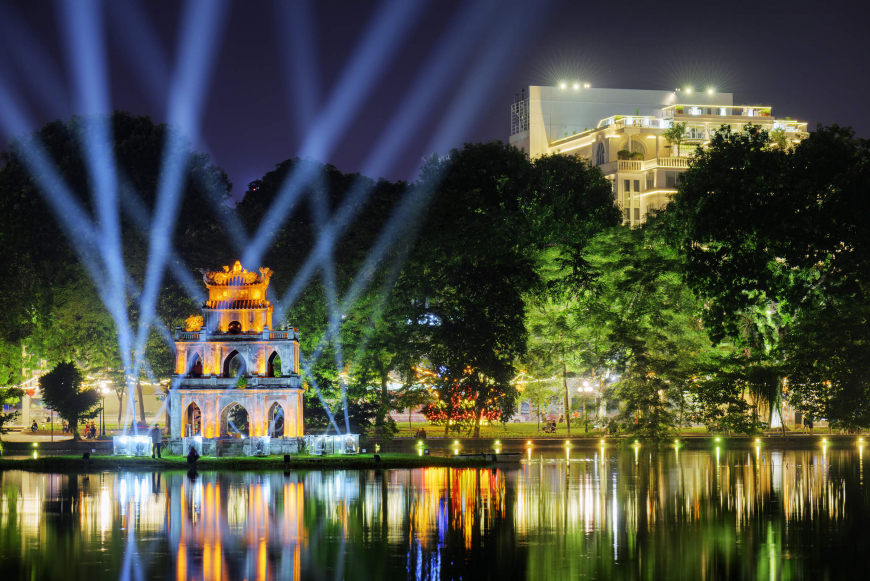
Hanoi’s traditional culture lives on in many forms, from its food to its art. Catch traditional theatre at a water puppets show or at the opera house, where classy French architecture meets spellbinding Vietnamese performance art. Though there is no shortage of fine dining in Hanoi, it would be a crime to miss out on the rich and complex food culture found in Hanoi’s street food.
Start the day like a local with a bowl of Phở. To many foreigners, phở has become synonymous with Vietnamese cuisine as a whole, but the quintessential soup dish was invented in Hanoi, and is at its best here in its homeland. For lunch, head to a bún chả spot like the one Barack Obama and Anthony Bourdain enjoyed together. These two superstars may have made the dish famous on an international scale, but Hanoians have been gormandizing this lunchtime vermicelli noodle dish for decades. For vermicelli noodles without broth, try bún bò Nam Bộ. The dish was introduced to Hanoi from down south (the name literally translates to “beef noodles of the southern region”) but is now enjoyed for breakfast, lunch, and dinner in the capital city. For a really authentic culinary experience, don’t miss out on bún đậu mắm tôm, a street-food specialty served with deliciously funky fermented shrimp paste.
Ha Long Bay
(3 hours ride)
Ha, Long Bay is a protected UNESCO World Heritage Site that is considered one of the seven wonders of the world. The limestone and slate karsts that tower up from the horizon have been shaped by oceanic activity for 250 million years, forming craggy peaks and caves that are mostly untouched by human life. There are almost 2000 islands in Ha Long Bay, a small minority of which host floating fishermens’ communities, and the vast majority of which are uninhabited and home to important ecosystems.
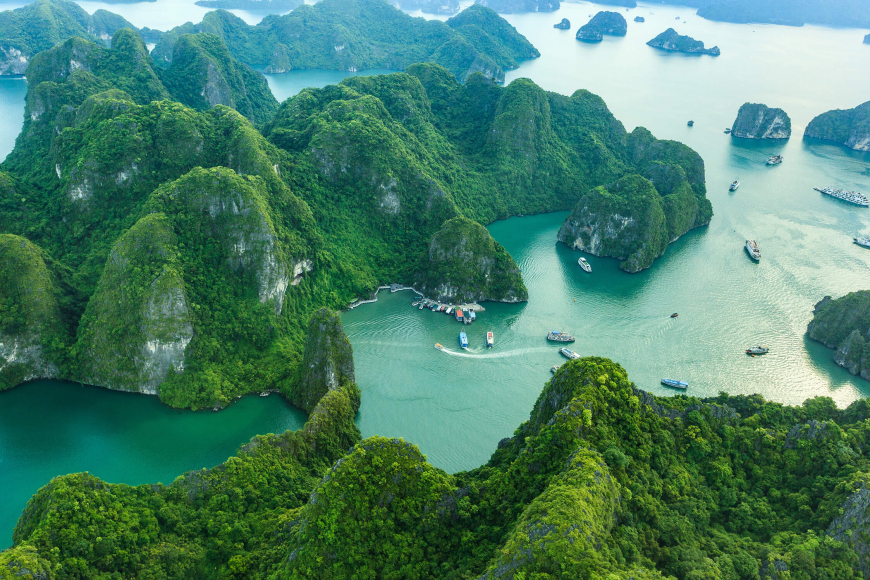
Cat Ba is the largest island in the region and the most popular, for good reason. More than half of the island is a national park designed to protect the region's delicate ecosystems like coral reefs and mangrove forests teeming with thousands of species of plants and animals. Hike through mountain ranges or dive, snorkel, and kayak between islands to explore the best of Ha Long Bay.
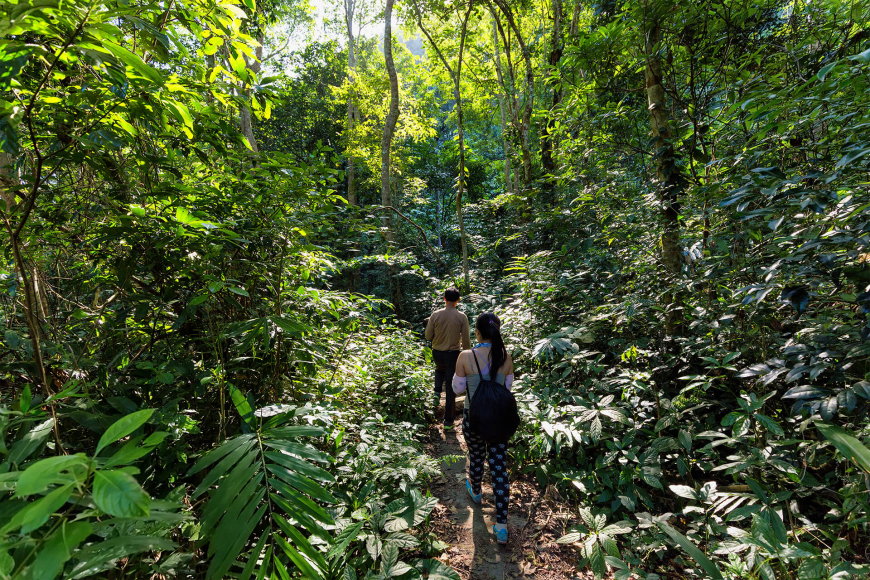
Ninh Bình
Ninh Binh is situated less than 100km southeast of Hanoi, the perfect distance for a weekend getaway. Ninh Binh is the name of the province as well as its capital, and the city serves as a good base to explore the rest of the region. The province is known locally as “Ha Long Bay on Land” due to the limestone karsts that tower over rice fields and ruins. The area is best explored by boat, through the calm rivers that wind their way through 30,000-year-old caves and mountains.
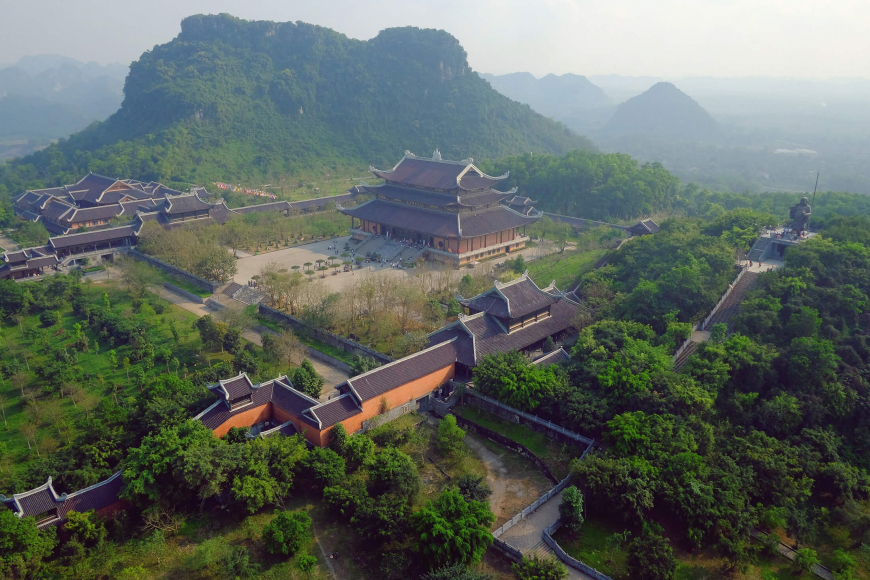
Trang An and Tam Coc are the two most popular destinations in Ninh Binh Province due to their proximity to true wilderness as well as dramatic agricultural landscapes and historical relics. Trang An is home to Hoa Lu which served as the capital of Vietnam in the 10th and 11th century during Vietnam’s first imperial dynasty. In Tam Coc, fields of green rice paddies sprout at the feet of mountains. Both regions offer boat tours through dozens of interconnected cave systems, pedaling through stalactites and stalagmites jutting like teeth along the river.
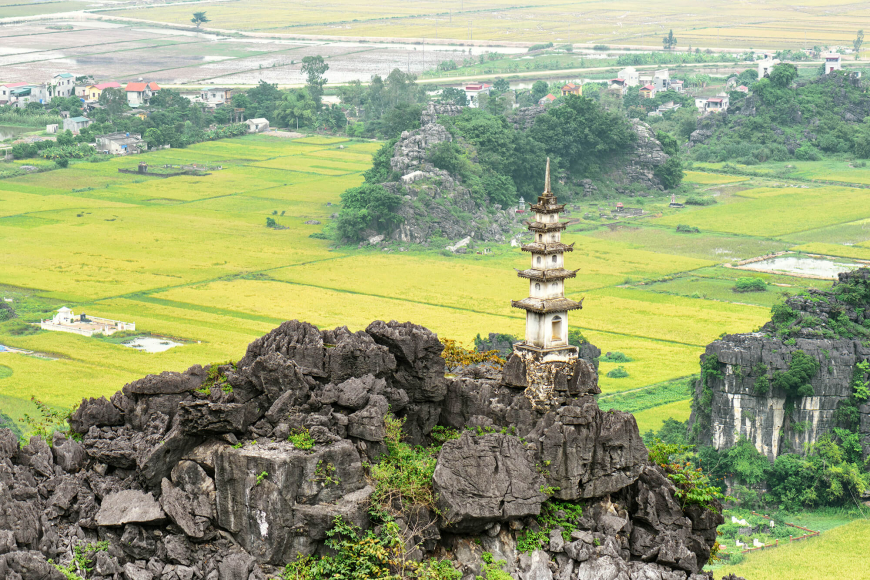
Mai Chau
(2.5 hours)
Head to Mai Chau for Vietnam’s true countryside, just a few hours in distance but worlds apart in culture from Hanoi city. Seven different ethnic minority groups live in Mai Chau. The White and Black Thai people make up the largest percentage of the indigenous population.
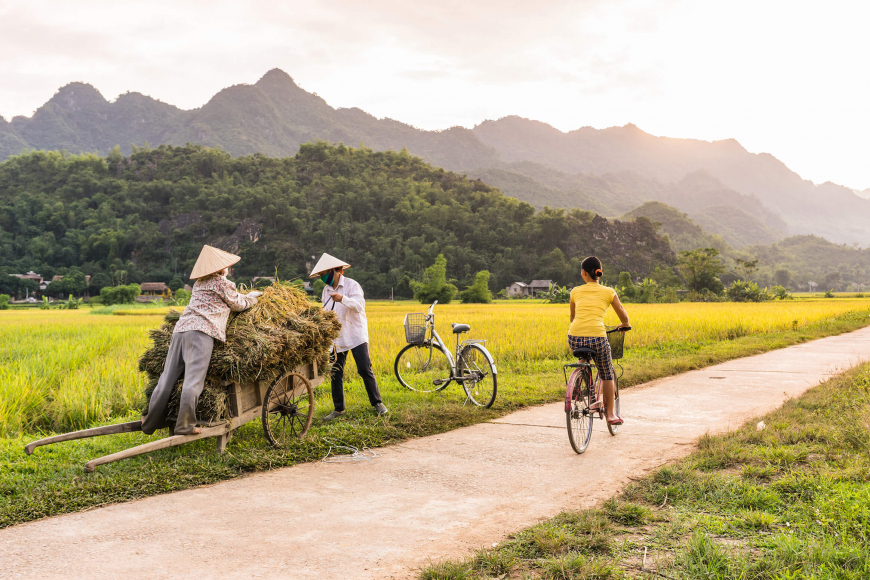
Mai Chau is a landscape of rolling mountains ribboned with farmers’ footpaths that weave between rice paddies and the stilt houses that cultivate them. Spend the weekend in a homestay to experience home-cooked meals and humble village life. Wake up to sunrise and birdsong and spend the morning and afternoon biking or hiking around friendly villages and homesteads. Fall asleep early in countryside darkness with stars stretching out overhead.
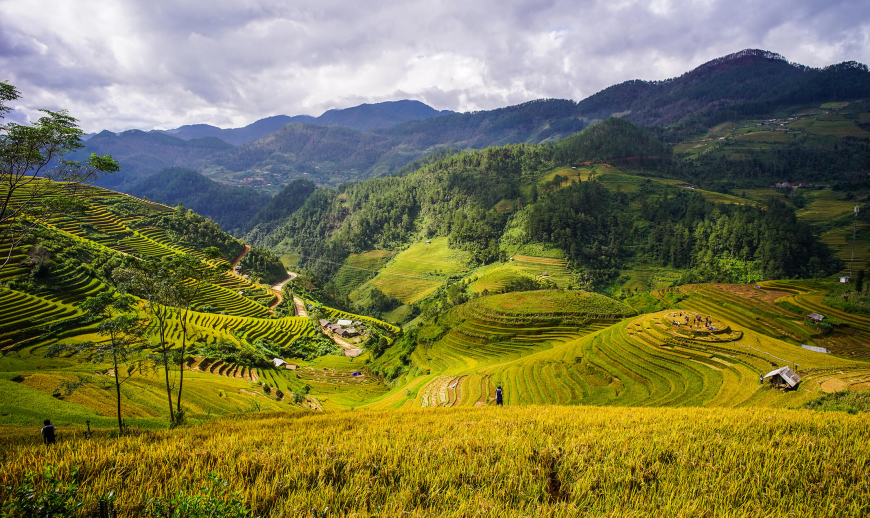
A relaxing weekend immersed in a rural lifestyle is fulfilling enough, but nature-seeking travelers can head just outside Mai Chau town to Pu Luong Nature Reserve to trek through tree-lined streams and waterfalls. Hoa Binh Lake is another alternative, perfect for a half day of peaceful kayaking.

